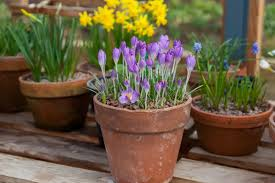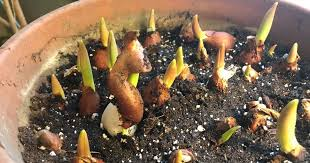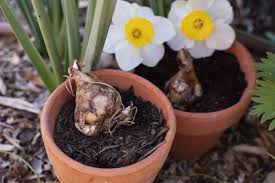Spring-flowering bulbs like daffodils, tulips, crocus, and iris need to be planted in the fall to ensure they undergo the winter chilling process that’s vital for them to bloom in the spring. Knowing the right time to plant is essential for vibrant, timely flowers come spring.
Understanding Bulbs
A “bulb” refers to an underground storage organ that holds everything needed for the plant to grow. These structures, which include true bulbs (like tulips and daffodils), corms (crocus), rhizomes (irises), and tubers (caladiums), are all specialized for energy storage and propagation. Though they differ in shape and structure, they serve the same purpose of storing energy for future growth.
Bulbs that flower in spring are considered “hardy,” meaning they can survive winter outdoors, where the cold temperatures trigger the necessary dormancy break to bloom in spring.
Best Time to Plant Bulbs
The best time to plant spring-flowering bulbs is in the fall when the soil temperature has dropped below 60°F (15°C) at a depth of 6 inches. However, measuring soil temperature can be tricky, so a simpler method is to monitor nighttime temperatures. When temperatures consistently stay in the 50s or lower for two weeks, it’s time to plant.
Additionally, spring-blooming bulbs need 4-6 weeks to establish roots before the first frost. Knowing the average first frost date in your region can help you time your planting better. The National Gardening Association provides a helpful tool for finding frost dates based on your zip code.

What if You Miss the Fall Planting Window?
If you forget to plant bulbs in fall and winter sets in, don’t panic. As long as the ground is still soft enough to dig and the soil temperature is above 40°F (4°C), bulbs can still be planted, and they will develop roots. A layer of mulch can protect them from frost heaving during freeze-thaw cycles.
Although planting late may delay the bloom by a few weeks, the bulbs should still bloom in their first spring. After establishing roots and chilling, they will be back on track for timely blooms in subsequent years.

Forcing Bulbs Indoors
If planting outdoors is not possible, you can force bulbs to bloom indoors. Place the bulbs in a pot with soil, leaving the tops exposed. Store the pot in the refrigerator at 40°F (4°C) for about 13 weeks to simulate winter conditions. After chilling, move the pot to a warmer space (65-70°F or 18-21°C), where the bulbs should bloom within two weeks.

Conclusion
Spring-blooming bulbs thrive when planted in the fall, benefiting from the natural chilling needed to trigger blooming in the spring. Pay attention to soil temperature, nighttime temperatures, and frost dates to determine the best planting time. Even if you miss the fall window, planting late or forcing bulbs indoors can still lead to beautiful blooms, although they may be delayed.
